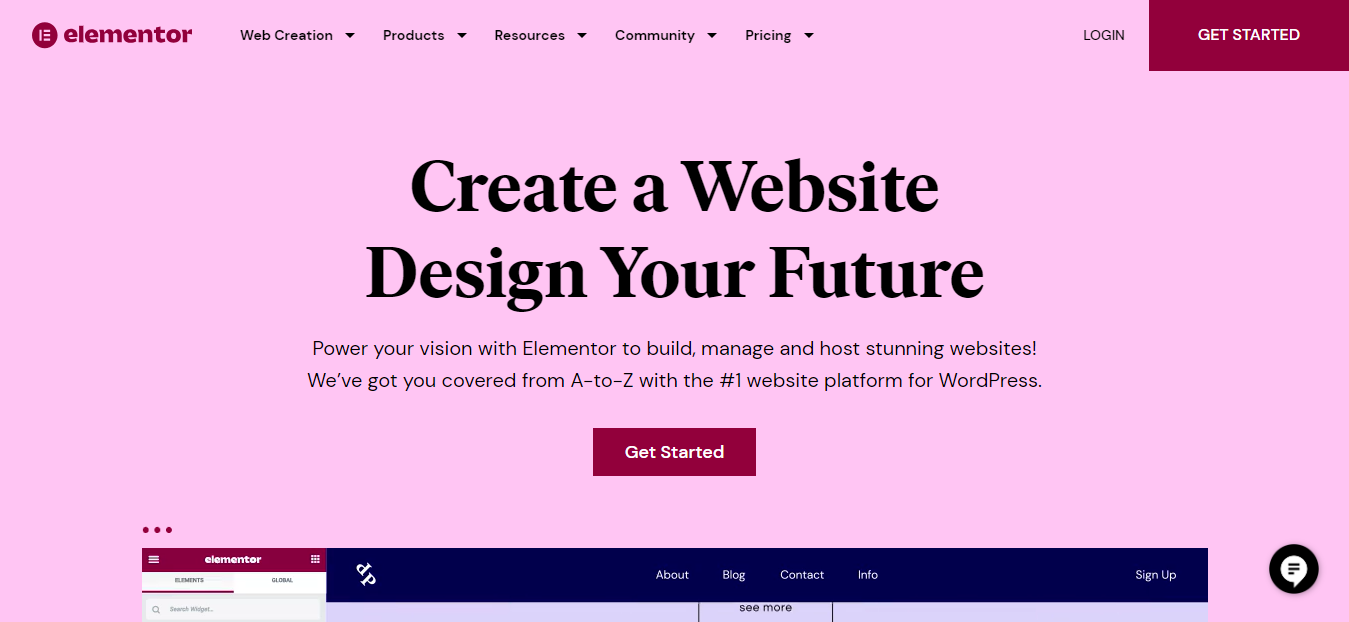Understanding WordPress Themes
Why Customize WordPress Themes?
Customization Options in WordPress
Best Practices for WordPress Themes Customization
Plugins or Tools to Customize Your WordPress Theme
In this article, we will explore the exciting world of WordPress themes customization and provide you with insights and tips to unleash your website’s full potential.
WordPress, being one of the most popular content management systems (CMS) in the world, empowers millions of websites across the internet.
One of the key reasons for its immense popularity is the ability to customize and personalize website themes.
WordPress themes customization allows users to tailor their website’s appearance, functionality, and user experience to align with their unique brand identity and goals.
Understanding WordPress Themes

Before diving into customization, it’s crucial to understand the concept of WordPress themes.
A WordPress theme serves as the visual and functional foundation of a website.
It determines the overall layout, design, color scheme, typography, and various other visual elements that contribute to the website’s look and feel.
WordPress offers a vast collection of free and premium themes, catering to different industries, niches, and styles.
Why Customize WordPress Themes?

While pre-designed themes offer a great starting point, customization allows you to make your website stand out from the crowd.
Customizing a WordPress theme empowers you to:
Establish Brand Identity

Personalize your website to reflect your unique brand identity, logo, color scheme, and typography.
Consistency across your online presence strengthens brand recognition.
Enhance User Experience

Tailor the website’s functionality, navigation, and layout to ensure a seamless and engaging user experience.
Integrate user-friendly features and optimize the interface for improved usability.
Optimize for Performance

Customize your theme to improve website speed, responsiveness, and performance.
Optimize images, minify CSS and JavaScript files, and leverage caching techniques to provide a smooth browsing experience.
Improve SEO

Implement SEO-friendly customization to enhance your website’s visibility in search engine rankings.
Optimize meta tags, headings, permalinks, and sitemaps to make your website more search engine friendly.
Customization Options in WordPress

WordPress provides a plethora of customization options, enabling you to transform your theme into a unique representation of your brand.
Here are some key customization avenues:
Theme Customizer
WordPress offers a built-in Theme Customizer tool that allows you to make real-time visual changes to your theme’s appearance.
You can modify colors, background images, site title and tagline, menus, and more.
Widgets and Sidebars
Add, remove, or rearrange widgets to create customized sidebars.
Widgets provide additional functionality, such as social media integration, recent posts, newsletter sign-up forms, and more.
Custom CSS
For advanced users, WordPress provides the option to add custom CSS code to override the default styling.
This allows precise control over the appearance of individual elements.
Best Practices for WordPress Themes Customization

To ensure a successful and efficient customization process, consider the following best practices:
Backup Your Website
Before making any customizations, create a full backup of your website.
This ensures you can revert to a previous state if anything goes wrong during the customization process.
Child Themes
When customizing a theme, it is recommended to create a child theme.
This allows you to retain the original theme’s core files while making customizations in a separate folder.
It prevents your modifications from being overwritten when the theme is updated.
Use Reliable Plugins
Leverage reliable WordPress plugins for specific customization needs.
Plugins offer extended functionality and simplify complex customization tasks, ensuring a smooth user experience.
Test and Iterate
Regularly test your customizations across different devices and browsers to ensure they are responsive and display correctly.
Iterate and fine-tune your customizations based on user feedback and analytics data to optimize the overall user experience.
Optimize Performance
As you customize your theme, keep performance in mind.
Optimize images, minify CSS and JavaScript files, enable caching, and utilize a content delivery network (CDN) to improve website speed and performance.
Maintain Compatibility
When selecting themes and plugins for customization, ensure they are compatible with the latest version of WordPress.
Regularly update your themes, plugins, and WordPress core to benefit from security patches, bug fixes, and new features.
Stay Updated with Trends
Keep an eye on current design trends and user expectations to ensure your customizations are aligned with industry standards.
Explore the latest theme features and functionality to provide a modern and engaging user experience.
Plugins or Tools to Customize Your WordPress Theme

When it comes to customizing your WordPress theme, there are various plugins and tools available that can simplify the process and extend the functionality of your website.
Here are some popular ones:
Elementor

Elementor is a powerful drag-and-drop page builder that allows you to visually customize your website’s layout and design.
It offers a user-friendly interface, pre-designed templates, and a wide range of widgets to create stunning pages without any coding knowledge.
Beaver Builder

Similar to Elementor, Beaver Builder is a popular page builder plugin that enables you to create custom page layouts using a drag-and-drop interface.
It offers responsive design options, customizable templates, and compatibility with many WordPress themes.
Divi Builder

Divi Builder is a versatile page builder by Elegant Themes.
It provides a frontend visual editor that allows you to customize your website in real-time.
It offers a large selection of modules, templates, and advanced design options.
Advanced Custom Fields (ACF)

ACF is a powerful plugin that allows you to add custom fields to your posts, pages, or custom post types.
It provides a user-friendly interface to create custom meta boxes and assign them to specific areas of your website.
ACF gives you granular control over the content and allows for extensive customization possibilities.
Customizer Custom Controls

This plugin extends the capabilities of the WordPress Customizer, allowing you to create and manage custom controls for various settings.
It enables you to add custom color pickers, range sliders, image uploads, and more to the theme customizer.
Custom CSS and JavaScript Plugins

Plugins like Simple Custom CSS and JavaScript (SCSSJ) or Simple Custom CSS allow you to add custom CSS or JavaScript code to your website without modifying the theme files directly.
This way, you can easily customize specific elements or add custom functionality.
WooCommerce

If you’re running an online store with WordPress, WooCommerce is the go-to plugin.
It provides a range of customization options for your product pages, shopping cart, checkout process, and more.
You can customize the appearance, layout, and functionality of your store using WooCommerce’s settings and extensions.
WPForms

WPForms plugins allow you to create custom contact forms with ease.
You can customize the form fields, design, and layout to match your website’s aesthetics and branding.
They offer a simple interface and seamless integration with other plugins and services.
Remember to carefully select and evaluate plugins before installation.
Look for plugins with good reviews, frequent updates, and compatibility with your WordPress version.
It’s also essential to keep plugins updated to ensure compatibility and security.
Additional WordPress Theme Customizations
In addition to the customization options mentioned earlier, here are some more advanced WordPress theme customizations you can explore:
Customizing Templates

WordPress themes consist of different template files that control the layout and structure of various sections of your website.
You can modify these templates to create unique designs for specific pages or sections.
For example, you can create a custom template for your homepage, blog posts, or portfolio pages.
Custom Post Types and Taxonomies

WordPress allows you to create custom post types and taxonomies, which expand the content possibilities beyond standard posts and pages.
This customization feature is beneficial for websites that require different types of content, such as portfolios, testimonials, events, or products.
You can design unique templates and layouts for each custom post type.
Customizing the Header and Footer

The header and footer sections of your website are essential for branding and navigation.
Customizing these areas allows you to add your logo, custom menus, social media icons, and other elements that align with your brand identity.
You can modify the header and footer by editing the theme’s template files or using theme customization options or plugins.
Adding Custom Fields

Custom fields provide additional data inputs for your posts and pages.
They enable you to add extra information, such as author bio, event details, product specifications, or any other specific details relevant to your content.
Plugins like Advanced Custom Fields or Toolset allow you to create and manage custom fields with ease.
Customizing Navigation Menus

WordPress offers a flexible menu system that allows you to create custom menus and assign them to different locations on your website.
You can customize the appearance, structure, and functionality of your menus.
For instance, you can create dropdown menus, mega menus, or add icons to menu items.
Plugins like Max Mega Menu or UberMenu provide additional menu customization options.
Customizing Typography

Fonts play a crucial role in the overall visual appeal of your website.
You can customize the typography by selecting different fonts, font sizes, line heights, and letter spacing.
Many WordPress themes offer built-in typography customization options, but you can also utilize plugins like Easy Google Fonts or Custom Fonts to expand your font choices.
Customizing WooCommerce

If you run an online store with WordPress using the WooCommerce plugin, there are numerous customization options available.
Additionally, you can customize the product page layout, product categories, shopping cart design, checkout process, and more.
WooCommerce provides extensive documentation and hooks to help you customize your store according to your specific requirements.
Remember, while WordPress offers a wide range of customization options, it’s important to strike a balance between customization and website performance.
Always keep your customizations optimized, regularly test them, and ensure they enhance the user experience rather than hinder it.
In conclusion, with careful planning and execution, you can create a highly personalized and professional website tailored to your unique needs.
Conclusion
WordPress themes customization provides an incredible opportunity to create a unique and captivating online presence.
However, by customizing your website’s theme, you can establish a strong brand identity, enhance user experience, optimize performance, and improve search engine visibility.
In conclusion, remember to follow best practices, test your customizations thoroughly, and stay updated with the latest trends to unlock your website’s full potential.
Additionally, with WordPress’s flexibility and customization options, the possibilities are endless.
Embrace the power of customization and take your website to new heights.
If you liked this article, consider reading another about How to Change WordPress Username here.
FAQ
The most customizable theme on WordPress can be subjective, as it depends on individual preferences and specific customization needs.
However, there are a few themes known for their extensive customization options and flexibility. Here are a few highly customizable WordPress themes:
Divi: Divi, developed by Elegant Themes, is a widely popular and highly customizable theme. It comes with its own drag-and-drop page builder, Divi Builder, which allows users to create unique layouts and designs. Divi offers a wide range of customization options, including font styles, colors, spacing, and layout settings.
Avada: Avada is a feature-rich and flexible theme that offers a powerful Fusion Builder for creating custom layouts. It provides a comprehensive theme options panel with a vast array of customization settings, allowing you to modify almost every aspect of your website. Avada also offers a wide selection of pre-designed demo layouts to jumpstart your customization process.
Customize Appearance: Use the theme’s built-in customization options or a page builder plugin to modify the visual aspects of your website. Custom logo, header, footer, fonts, colors, background images, and overall styling to align with your brand identity.
Customize Layout and Structure: Utilize the theme’s layout options or a page builder to create unique page structures. Arrange content blocks, sidebars, and widget areas according to your preferences. You can also customize the navigation menu, add breadcrumbs, and create custom templates for specific page types.
